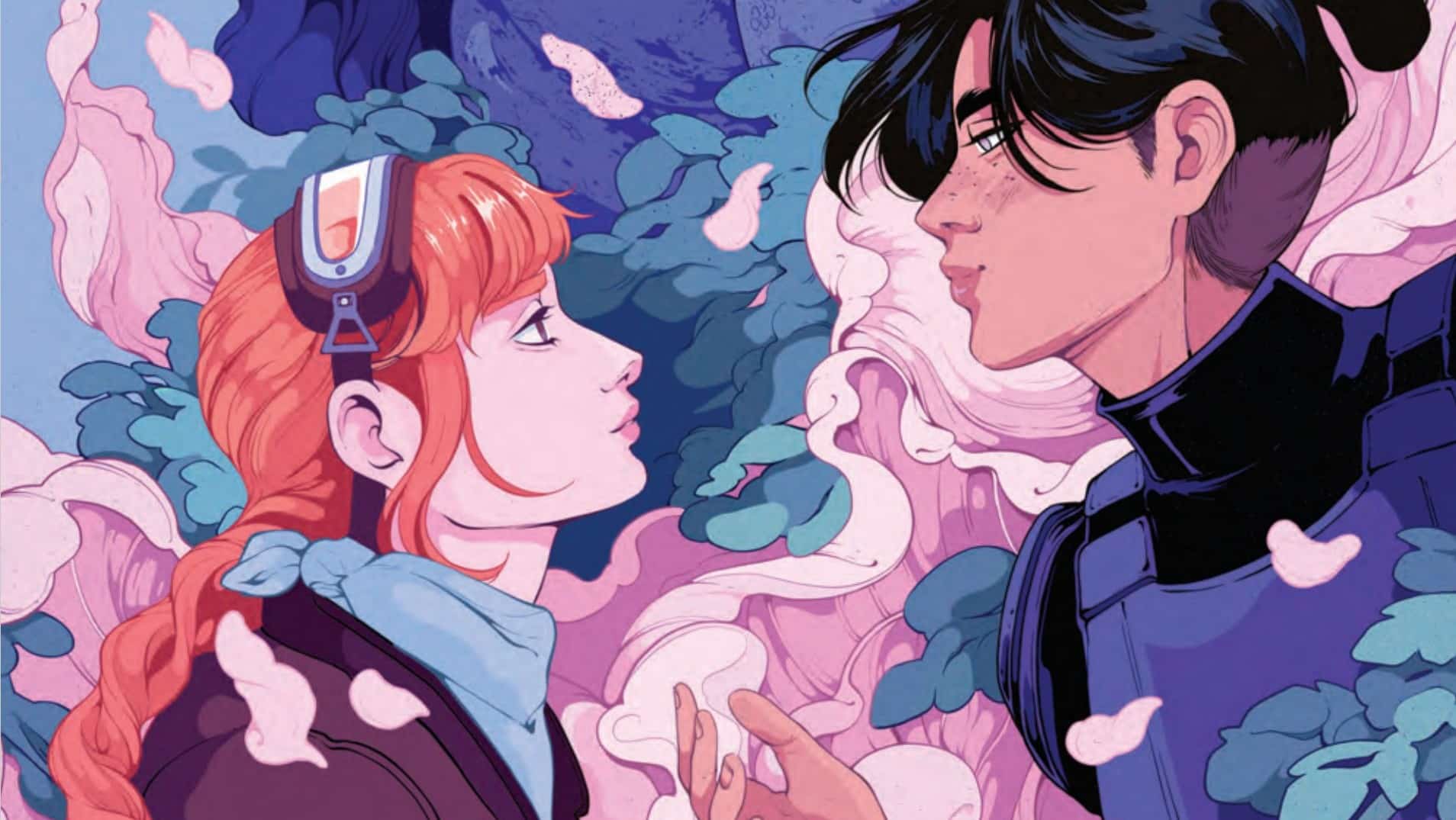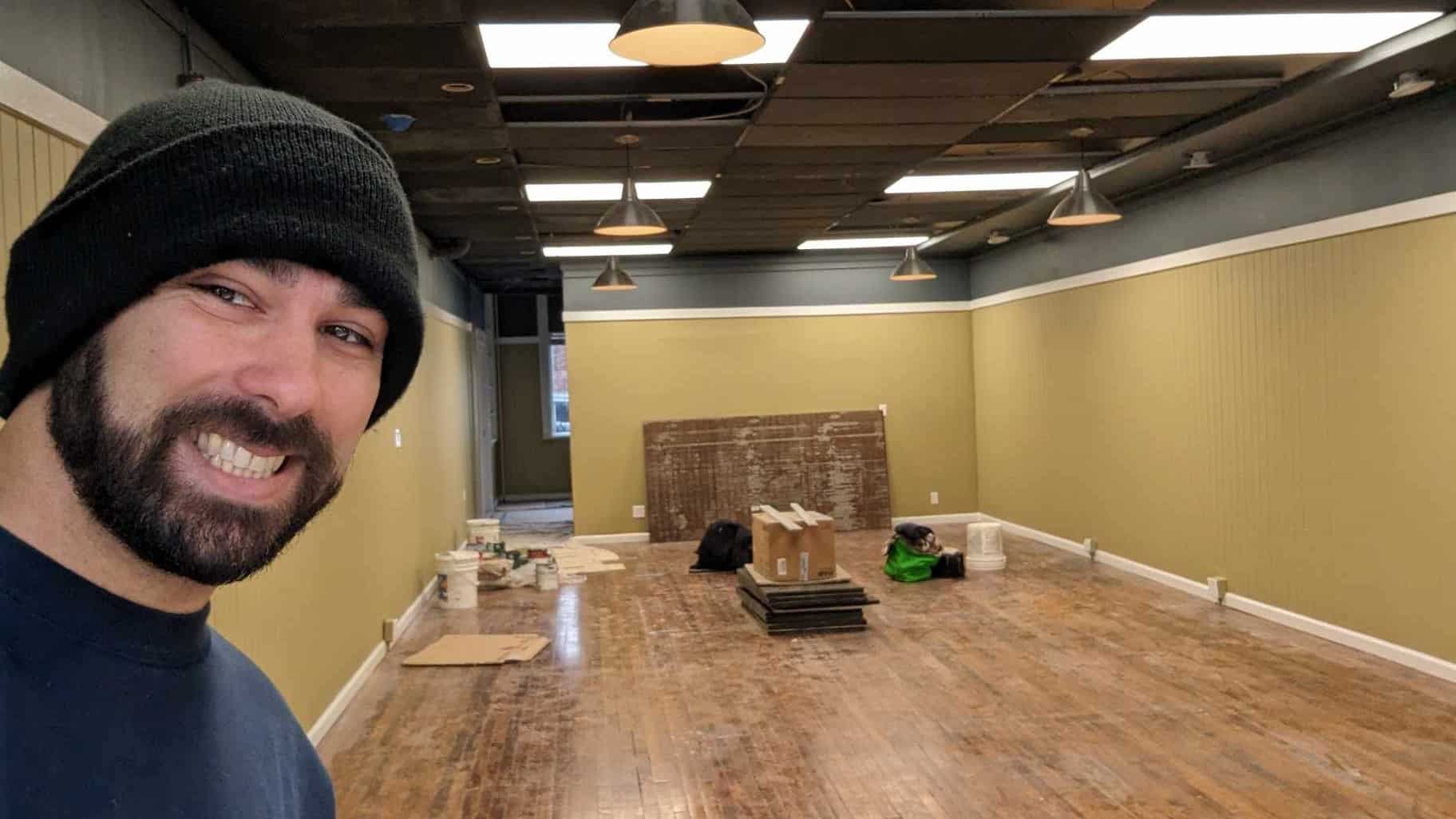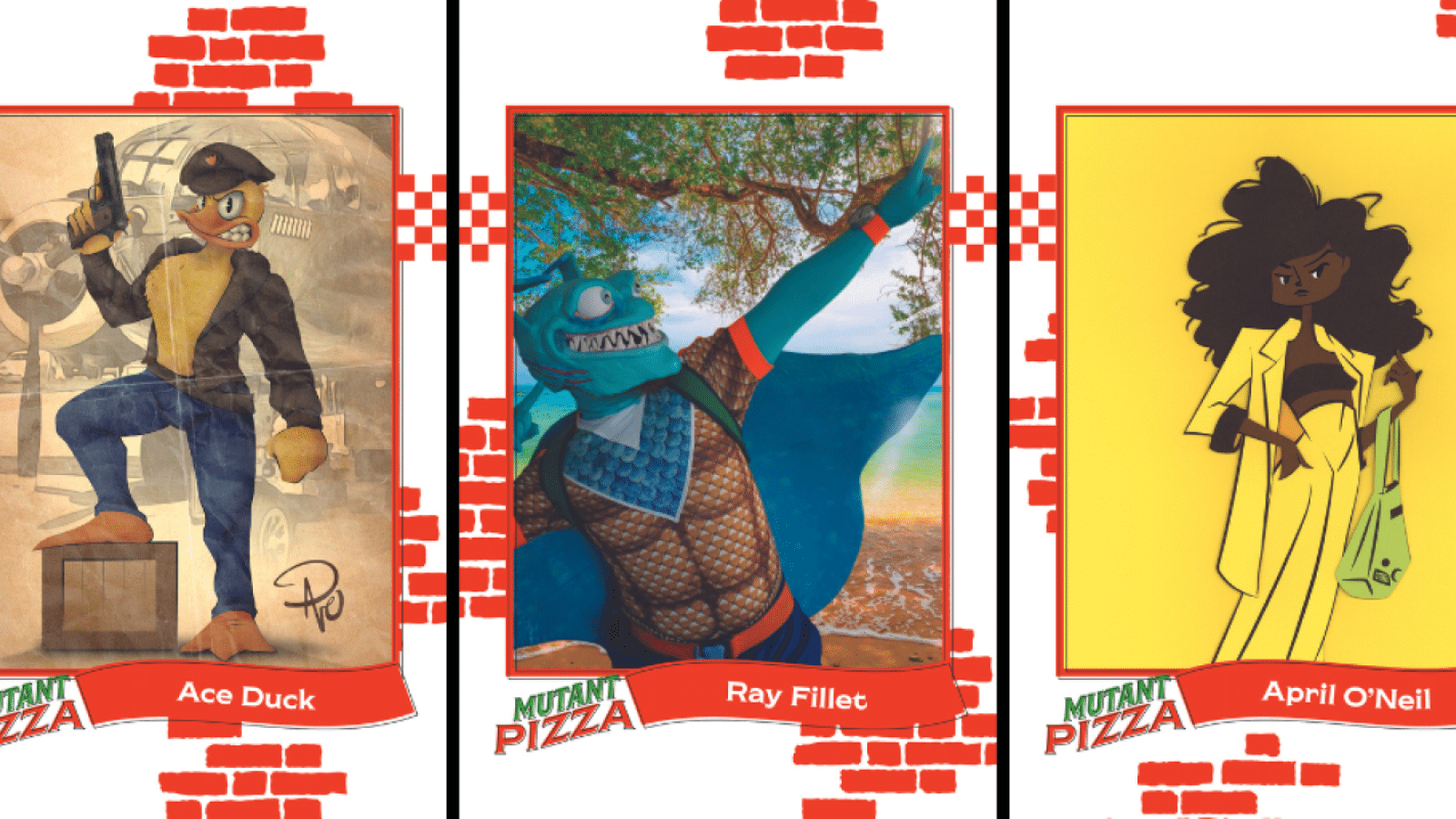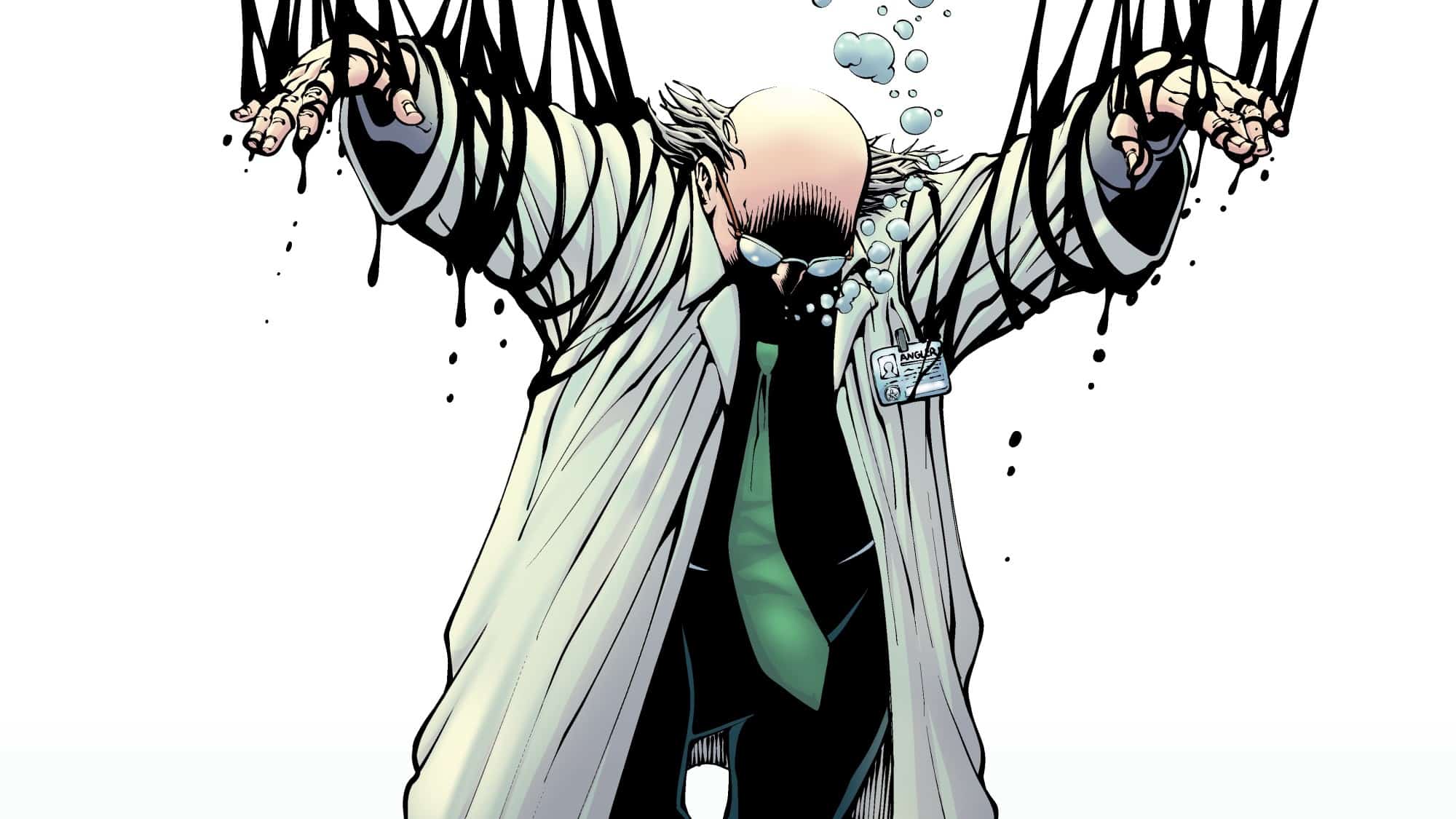For those just joining us, last week we debuted Part I of our exclusive interview with John Allison, where we discussed the origins of his ongoing Giant Days/All-Star Batman crossover, currently being published at badmachinery.com. I didn’t want to spoil the reveal of the new villain, 147, so I held back this portion of the interview until the snooker angle was revealed.
Mark Turetsky: Even listening back to your recounting of the pitch from years ago, it always centered on snooker. The villain was slightly different, as you described him.
John Allison: Yes, he was an industrialist. There’s a British industrial dynasty called the McAlpines. They own sportsgrounds, things like that, classic builders. But I changed it from the McAlpines, because McAlpine might sue me. I remember once when I was doing an internship at a newspaper, we saw McAlpine on the opposing platform of a railway station, and the journalist I was with shouted at him, and I thought McAlpine might remember this affront, and might turn on me, legally, with the full firepower of his enterprise. So I changed it. And I’d watched a documentary about snooker, about the classic snooker players of the 1980s and ’90s. It attracts a certain sort of character, quite an edgy sort of sportsman, because it’s a saloon bar game. And that kind of shaped what the story became.
Mark: I think my only reference point for snooker is the Mitchell and Webb sketches, where they say, “That’s a bad miss.”
John: Yes! And I tried to get that in a few times for the benefit of my American readers because all anybody from outside the U.K. knows about Snooker is “Oh, that’s a bad miss,” but they’d never seen the actual game.
Mark: So, it’s a Batman comic, of a sort…
John: It doesn’t … it mocks Batman in that Batman does not deal particularly well with the Giant Days universe. But then why should he be expected to? It’s a sort of chaotic cartoon universe. Very different from the sort of dark, edgy mean streets that he deals with. He’s gone to a town he doesn’t really know about, and he has to play by a very different set of rules. He’s a billionaire, a billionaire abroad. You should expect him to be a little recherche. He’s not in his normal milieu at all.
Mark: What I was getting at is, snooker is not really a very active game. And this isn’t so much an action comic, as you would normally expect from Batman.
John: No, because Batman’s Detective Comics, Action Comics is Superman, Mark, you need to remember that. They’re two very different products!
Mark: This is why they shouldn’t have sent me.
John: These are very dangerous waters you’re getting into. But you’re absolutely right. But there is action in the comic, it does build to a pulse-pounding, senses-shattering conclusion for red-blooded readers. I couldn’t do it any other way. My feeling about snooker players is that they’ve been destroying their systems with booze, pills, late nights and extreme concentration on their end of a table full of balls. Probably for 20 years, and so they can be as strong as any Batman villain would be. Batman’s villains have always been grotesques drawn from other fields. They’re the extreme version of a jewel thief, an extreme version of a clown and an extreme version of a man holding a spatula over his face (That’s Bane, I think). And so, I tried to think through, in the sort of Bill Finger, Bob Kane tradition, what sort of snooker player would end up being in a Batman situation. I think readers will find that I’ve got it almost 100% correct. It’s about what happens when Batman confronts the logic of the Giant Days universe. That’s the technical exercise that I’m performing here.
Mark: I would think one of your more supernatural comics might be a better fit for Batman. Like, with Bad Machinery, they’re solving mysteries, they’re fighting monsters.
John: Oh yeah, it’s the worst fit. That’s the whole reason that I thought of it in the first place. It’s the most incongruous and unnecessary crossover. I mean, we’ve seen the Archie vs. Predator crossover, so there’s no line of absurdity in comics that has not at this point been crossed. So it was very important that I treated it seriously, and that it was absolutely as true an intersection of these two universes within reason as it could be, and that’s why I had to go through the Batman animated series world as well. Because I’m very influenced by those artists. So they do actually inform the way I draw, obviously not the way Max Sarin draws, although Max works on Batman-related titles.
Mark: Yeah, Harley Quinn: The Animated Series: The Eat. Bang! Kill. Tour.
John: Yeah, so it all links up, everything is connected. That’s the best way I can put it.
Mark: You’re one of the longest-running webcomic creators. What do you think it takes to stay in the game so long?
John: It’s an endurance test. And I think you’ve got to be able to continue to surprise yourself, for yourself, but you’ve also got to stay consistent for the readers. If you deviate too far outside of what you’ve been doing for the readers, they’ll abandon you. And I’m lucky to have a hard core of readers who have stuck around in many cases for 20 years, as well as newer readers that I’ve got through Giant Days. So to stay in it long term, you’ve got to keep yourself interested, keep your readers interested. I don’t think you can ossify like a newspaper strip does. It’s got to be a constant exploration of what you’re interested in, and you’ve got to be willing at times to take decisions that your readers won’t like, but you can’t take too many of them.
Mark: The amazing thing to me is that even while you were working on monthly comics, you were still plugging away at webcomics. Can you talk a little bit about that transition from webcomics, to monthlies, and now back again mostly to webcomics. I know Dark Horse is collecting the Steeple webcomic as trade paperbacks.
John: Well, the transition really was, I was working on Bad Machinery and Oni were publishing it. I wanted to work on Giant Days as well, but I couldn’t draw two series and service Oni with pages, so I pitched Giant Days to Oni first, and I had a different artist lined up, and I said, are you interested in this as well? They weren’t, so I put it on the back burner after the first self-published comic I did. It was only after that proof of concept that I’d done, and then I came back to it a couple of years later with Boom.
They asked if I had anything, and I was like, “Well, I’ve got this. I think this is quite good, I think this might be as good as Bad Machinery.” And so I ended up writing a monthly comic. I’d never written for anybody else, and I had no intention of writing for anybody else. So suddenly I found myself writing a book that was popular. I thought I was signing up for a six-issue limited series, but I was writing month after month. And so you start to build new muscles, and you think, “What else can I do?” And then it started getting nominated for awards, and BOOM asked me, “Well, have you got anything else?” And I’m quite a people pleaser, so I said, “Well, I haven’t. I’m already working on Bad Machinery and this, but I’ll try to come up with something else.”
So I came up with By Night. I think By Night is good, but it’s also the product of a mind that is strained to its limits. It’s so full of mad ideas. Because I’m literally trying to do all the things that I wasn’t doing in the other comics. So you end up with something that is very odd. I did my best, but looking at it, I think Christine Larsen did great work on it, but this is the work of someone who is really, really, really tired. And knows technically how to write jokes and stuff, but is working with very odd material. It’s about a hollowed-out mountain, a living mountain whose brain has been hollowed out?! What message is that sending to kids?! That’s what I want to know. What’s going on here?
And then going back to webcomics really, the pandemic kinda stuck Wicked Things, because it was basically launched as the pandemic kicked off, shops were closed and in the direct market, indie titles were struggling anyway. I so like working in serial work and monthly books, but the direct market is not helpful to you at the moment, for a 22-pager. My readers often couldn’t find books in shops because they’d be ordered high on the first issue and then drop off for the second issue. They’d be ordered low before the first issue would come out. So people would go out, buy the first issue and find they couldn’t buy the other issues.
When the pandemic hit, I just went back to first principles. I wanted to keep making Steeple comics; I wasn’t sure it would absolutely work in the direct market. So I just made some. We didn’t know what was going to happen at the start of 2020, so I did that. I started up the Patreon. They’re desperation moves, really. But I think I got some good comics out of it. And they were happy to take more off me as OGNs; it’s a much cheaper way of producing comics. I just pitched up and said, I’ve got 88 pages, or 120 pages, and they were like, “Well, that’s alright, we’ll take those off you.” Budgetarily it’s a much easier way of doing it. So it was very easy to move into volume 2 and volume 3. Obviously, I’ve worked on that for ages, and now I’m ready to move onto other things. I love working on Steeple, but it’s harder to make. That’s hard drawing for me. I don’t know if I want to keep drawing it myself. I’d like to get someone better at drawing than me to push the ideas in the comic a bit further.
I’m OK, but I’m only OK. I’m not Seth Fisher or Max Sarin, I’m not going to be able to push the imagination. There’s blood coming out from under my fingernails if I have to draw an action sequence. I’m right at the limit of what I can do. I’m limited. I’m a comic strip artist who can sort of work himself into a state of high agitation and maybe do a few pages of action or a difficult angle, but there are so many people who are better than me.
Mark: I’ve gotta say, I started picking up Giant Days collections just as it was ending, and then I read Bad Machinery right before Wicked Things started coming out, just so I could be familiar with the characters, and your cartooning has improved immensely in that time.
John: I’ve worked very hard at it. I know what my limitations are. And it’s very tiring, because I’m coloring, I’m lettering and I’m doing a page a day, but there’s not any benefit to me taking two days over a page. Literally, that’s what’s going to come out. That’s about as good as I ever get. My greatest power is just to be able to say, “I’m finished.”
Mark: That’s the discipline that comes with being a daily webcomics creator, it’s being able to put something out every day.
John: I’d love to be like Matthew G. Allison, the guy who does Cankor comics. Incredible work! He can sit and work on incredible tentacles, and tendrils, and the most sort of monstrous things. Gosh, I’d love to work with him on something.
Mark: Tentacles sounds like Steeple territory to me!
John: Exactly, just to get him to do a cover for me, that would be amazing. But I can’t ever sit and labor over something like that. I’ll never have those powers. So thank you very much for saying that the cartooning’s getting improved. I’ll say it’s a constant struggle.
Mark: So what’s next? I know you posted that preview for Solver on the Patreon.
John: I’ve worked so hard over the last six years, that I’m kind of taking it a bit easy. I’ve burned myself out three times. I could easily knock up some big pitches, and go and see who’s interested, but the thought of being locked into a kind of cycle of work that would probably just leave me exhausted again, I’m not that excited about because it’s been two pretty exhausting years. I’ve worked myself very hard. I work myself harder than any boss, to be honest with you. I’m the problem, not my editors. I’m just trying to beat deadlines by as much as I can, as if it’s a sport.
So I’m just doing webcomics. In the short term, the Patreon is keeping me going, and then I do have other projects. There’s The Solver, the Charlotte series, but again, there’s a trial balloon for doing it in a different way. Max is busy now. I probably could have proceeded with Wicked Things, but I would want to do it with Max, so, a new name, a new approach. Not that kind of slightly dark bedeviled kind of comics. I made a lot of comics about being trapped, which I think was a bit of a message to myself, really, so I’m working Charlotte into a different direction, which will be apparent in that Solver comic that I’m making. It’s the Solver Spring Special, and that’s due in April; I’ll put it up in April on the Patreon and then run it on the website.
I’ve been doing a few pages of that now, and beyond that, you know what, I have no idea. I have maybe five years’ worth of stories up on a board that I could do. I have so many Steeple stories, so many Charlotte stories, and other stuff as well. And then I’ve got other series as well, but sometimes the fun is having the idea, but then when you have to make it you don’t actually want to do it. I’m looking at finding some collaborators and doing some stuff that kind of takes me out of myself, because I’ve been in my own head for a couple of years. The webcomics will keep coming because I enjoy making them. But I think to do other projects, I need to organize myself now that the world is opening up again.
Mark: It’s kind of amazing just how much content you have created over these last few years. In addition to those webcomics, you’ve got the very quick Desmond Fishman comics, Here Comes Gothy, there’s so much. It’s pretty impressive, but I can definitely understand wanting to take a step back.
John: I’ve got to slow down, I’ve realized in recent months that I’ve got to slow down. There’s going to be a certain amount of painting the baseboards in the house and things like that. A lot of meditative activities that I’ve got lined up that don’t involve staring at a screen for three hours at a time.
Mark: Well, thanks for taking the time to sit down and talk to me about this project.
John: Thank you, Mark. I appreciate you asking me these questions in the first place. I wasn’t sure anyone would actually be particularly interested in this project, beyond, sort of pointing at me going, “What in God’s name is he doing?”






